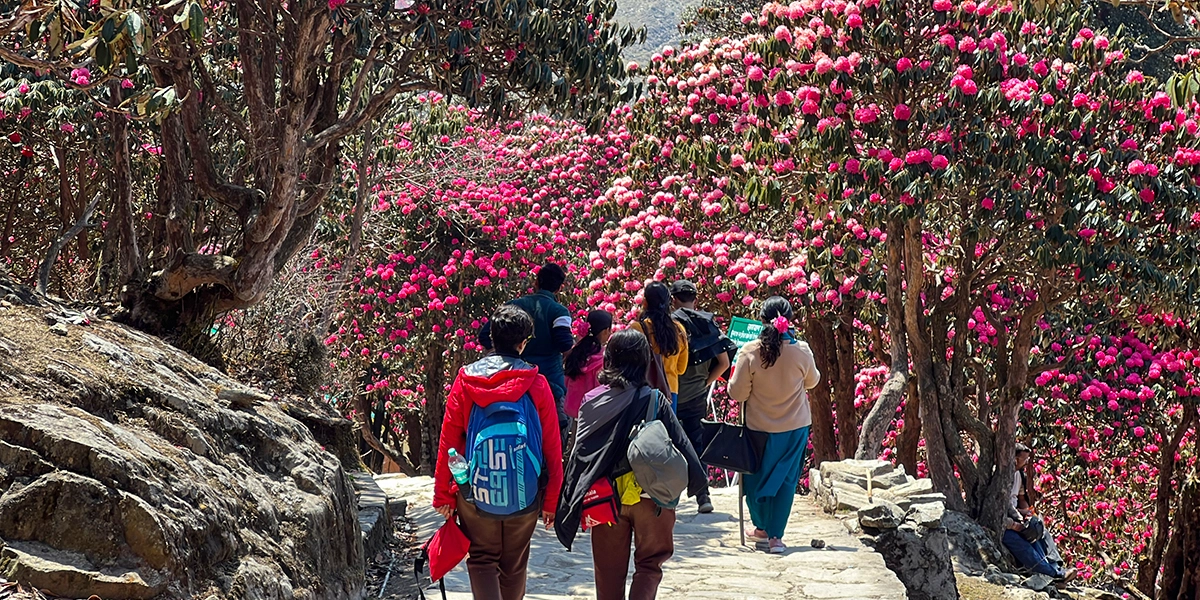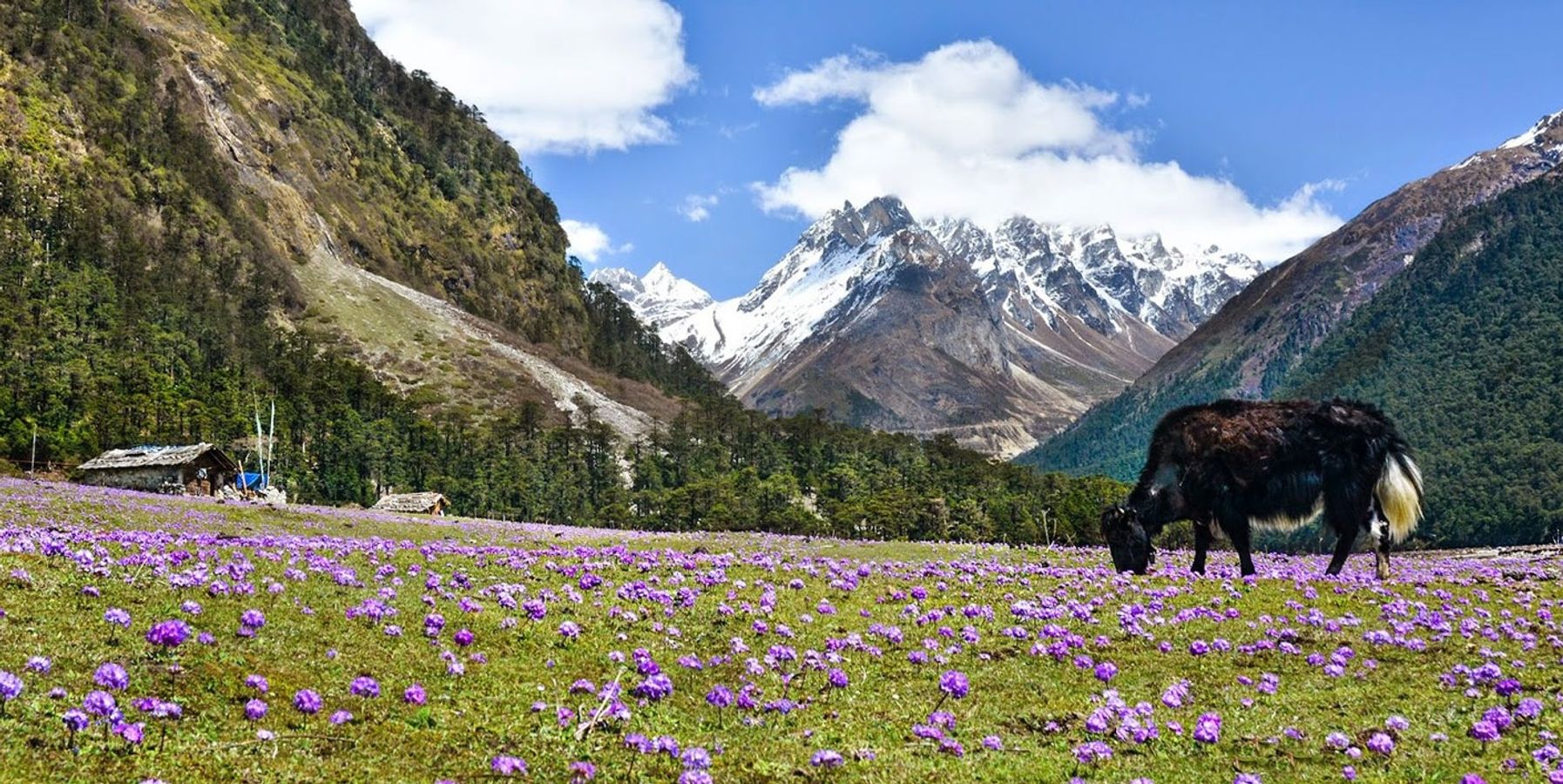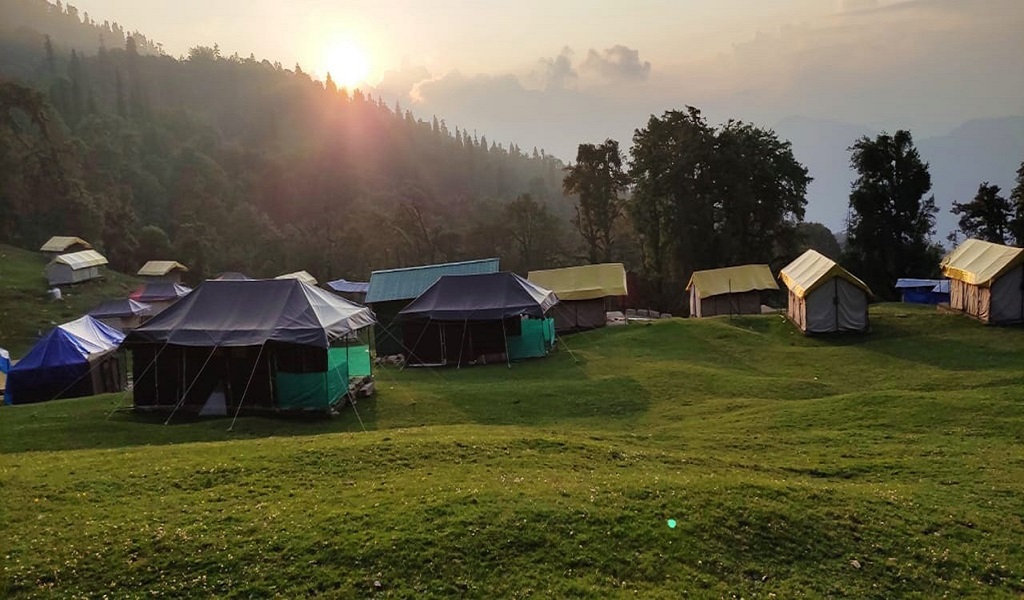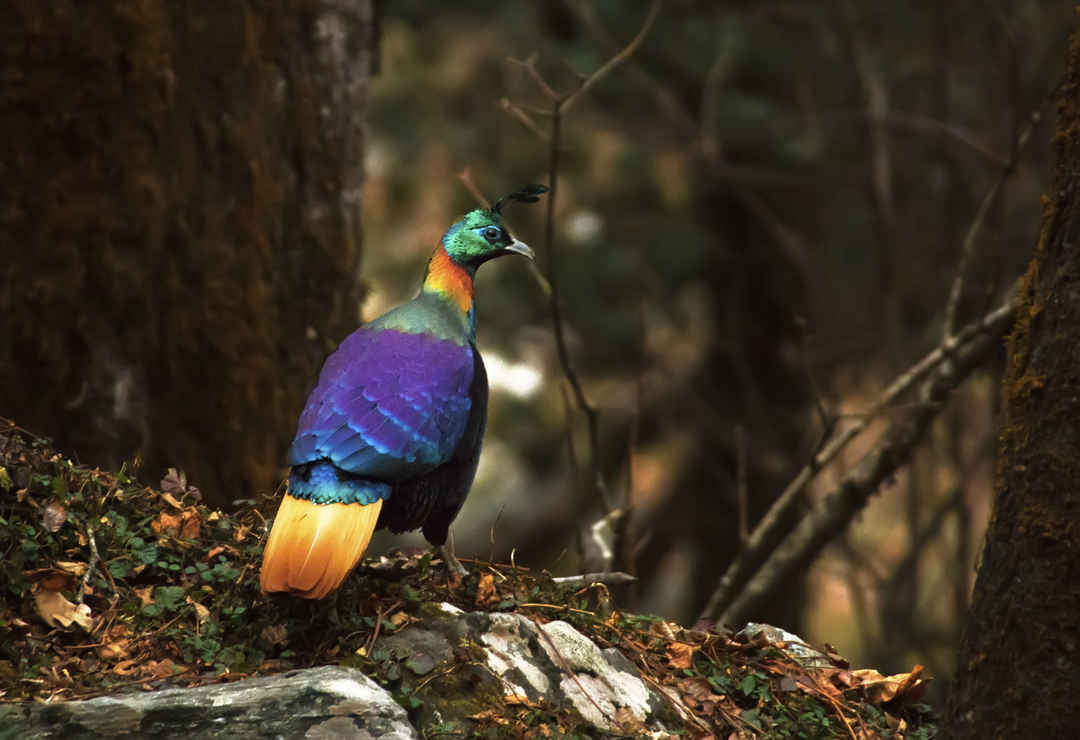Chopta Forests & Meadows
Published on September 12, 2025
Chopta is a remarkable Himalayan destination known for its dense forests and wide meadows, offering a perfect mix of tranquility and adventure. Visitors on a Chopta tour package can enjoy peaceful walks under tall pine, oak, and rhododendron trees, spot Himalayan birds, and breathe in the fresh mountain air that refreshes both mind and body.
The meadows, locally called bugyals, are sprawling grassy fields that bloom with wildflowers in spring and summer. They are ideal for photography, camping, or watching the sunrise over the majestic Chaukhamba peaks. Many travelers plan their journey through a Chopta tour package from Delhi, making it easy to reach this serene region while enjoying comfortable stays and guided treks.
Chopta also serves as the starting point for famous Himalayan treks like the Tungnath Temple trek and Chandrashila summit trek. Even short walks in the forests and meadows allow travelers to experience Himalayan wildlife, quiet streams, and panoramic views that make the region truly special. For anyone seeking a combination of adventure, nature, and peace, Chopta’s forests and meadows are an unmissable part of their journey.

Types of Forests in Chopta
Chopta is not just famous for its meadows; the forests here are equally captivating and play a key role in making the region a favorite among nature lovers and trekkers. The forests are mostly made up of pine, oak, and rhododendron trees, creating a peaceful environment and clean mountain air. For travelers planning the Chopta Tungnath trek, the forest trails are the first encounter with Chopta’s natural beauty, offering shade, calm, and a chance to observe the Himalayan ecosystem closely.
The pine forests dominate the lower altitudes. Their tall, straight trunks and needle-covered ground make for easy walking trails. These areas are especially enjoyable in the morning when sunlight filters through the trees, and the scent of pine fills the air. Pine forests are also home to birds like the Himalayan bulbul and woodpeckers.
Higher up, you will find oak forests, where the trees are sturdy and widespread, often forming a natural canopy over trekking paths. Oak forests are perfect for spotting small mammals such as squirrels and Himalayan marmots. In spring, these forests are dotted with fresh green leaves, while in autumn, they turn golden, creating stunning scenery for photography enthusiasts.
Rhododendron forests are a special highlight of Chopta. Blooming between March and June, the rhododendron flowers turn the forest into a colorful spectacle of red, pink, and white blossoms. These forests are not only visually attractive but also provide opportunities for bird watching and nature walks.
Key Features of Chopta Forests:
-
Pine Forests: Low-altitude, easy trails, birdwatching opportunities.
-
Oak Forests: Higher altitude, home to Himalayan mammals, seasonal colors.
-
Rhododendron Forests: Blooming in spring, vibrant flowers, great photography spots.
-
Wildlife: Musk deer, Himalayan squirrels, pheasants, and numerous bird species.
-
Trekking Connection: Trails through these forests lead naturally to the Chopta Tungnath trek, making the journey scenic and immersive.
These forests not only provide natural beauty but also shelter and pathways for trekkers heading to Tungnath Temple. For visitors, walking through Chopta’s forests is an educational experience, offering insight into Himalayan flora and fauna. With well-marked trails, benches at viewpoints, and quiet resting spots, the forests are suitable for beginners, families, and serious trekkers alike. Experiencing Chopta’s forests is a must for anyone wanting to understand the region’s charm before moving on to the meadows and higher-altitude treks.

The Charm of Chopta Meadows
Chopta’s meadows, locally known as bugyals, are one of the biggest highlights for travelers visiting the region. These open grassy fields are surrounded by forests and offer panoramic views of the Himalayan peaks, making them perfect for relaxation, photography, and short nature walks. Travelers who book a Chopta tungnath trek from Delhi often start their journey through these meadows, enjoying the gentle slopes and colorful wildflowers before reaching higher altitudes.
The meadows in Chopta are especially lively during spring and summer. During this time, they are covered in bright wildflowers, creating a beautiful contrast against the green grass and distant snowy peaks. Early mornings and evenings are ideal for watching the sunrise and sunset, as the mountains and meadows glow with soft golden light. The gentle breeze and fresh mountain air add to the charm, making every walk through the meadows a calming experience.
For families and beginner trekkers, Chopta meadows are perfect. You can spend time sitting on the grass, picnicking, or observing the natural surroundings without the need for strenuous trekking. The meadows are also a favorite spot for wildlife enthusiasts, as you may spot Himalayan birds and small mammals like squirrels and marmots.
Key Features of Chopta Meadows:
-
Wildflowers: Blooming in spring and early summer, creating a vibrant landscape.
-
Photography: Perfect spots for sunrise, sunset, and panoramic mountain shots.
-
Relaxation: Ideal for picnics, meditation, and enjoying fresh Himalayan air.
-
Wildlife: Himalayan birds, squirrels, and other small animals are commonly seen.
-
Trekking Gateway: Serves as the starting point for the Chopta Tungnath trek from Delhi and other higher-altitude treks.
The meadows also serve as camping spots for travelers who wish to stay close to nature. Many local tour operators provide tents, sleeping bags, and meals so visitors can experience the peaceful environment overnight. Walking across these open fields gives a sense of freedom and connection to the Himalayan landscape that is hard to find elsewhere.
In short, Chopta meadows are more than just open spaces—they are the heart of the region’s natural beauty. Every traveler, whether on a Chopta tungnath trek from Delhi or a leisure tour, will find the meadows unforgettable for their calmness, scenic views, and opportunities for adventure and relaxation.

Adventure Activities in Forests & Meadows
Chopta’s forests and meadows are not just about scenic beauty—they are also a hub for adventure activities. Travelers visiting Chopta can enjoy a variety of experiences that suit beginners, families, and experienced trekkers alike. For those seeking a more challenging journey, the Chandrashila trek starts from these meadows, offering an exciting mix of forest trails, open grasslands, and panoramic Himalayan views.
The forest trails are ideal for trekking and nature walks. As you move through pine, oak, and rhododendron trees, the trails provide shade, fresh air, and occasional glimpses of wildlife. Trekking in these areas is both peaceful and invigorating, making it perfect for travelers who want to combine fitness with natural exploration. The meadows, on the other hand, offer open space for activities like camping, photography, and simple morning or evening walks.
Adventure Options in Chopta Forests & Meadows:
-
Trekking: Trails lead to Chandrashila trek, Tungnath Temple trek, and other Himalayan peaks.
-
Camping: Overnight stays in the meadows provide a chance to watch stars and enjoy quiet evenings.
-
Photography & Bird Watching: Meadows and forests are home to Himalayan birds and colorful wildflowers.
-
Nature Walks: Gentle walks through forests are ideal for families and beginners.
-
Picnics & Relaxation: Open meadows offer perfect spots for resting during treks.
For trekking enthusiasts, combining Chopta forests and meadows with the Chandrashila trek is highly rewarding. The forested paths gradually open into vast grassy landscapes, giving a sense of accomplishment and serenity at the same time. Beginners can try shorter loops through the meadows, while experienced trekkers can continue toward Chandrashila summit for breathtaking sunrise views.
Even for travelers who do not plan to trek extensively, the forests and meadows offer adventure at a manageable level. Birdwatching, spotting small Himalayan mammals, and walking along marked trails can fill a day with excitement. The natural environment also teaches travelers about Himalayan flora and fauna, making the adventure both fun and educational.
In conclusion, Chopta forests and meadows are ideal for combining leisure with adventure. Whether participating in the Chandrashila trek, camping under the stars, or enjoying a simple nature walk, these landscapes offer a unique Himalayan experience that caters to every type of traveler.

Wildlife and Bird Watching
Chopta’s forests and meadows are home to many types of Himalayan wildlife, making it perfect for nature lovers. Walking through pine, oak, and rhododendron forests, visitors can see birds and small animals in their natural environment. Even a short walk through the meadows can allow you to spot Himalayan squirrels, marmots, and colorful pheasants. This makes the Chandrashila summit trek not just a trek, but also a chance to enjoy nature and wildlife.
Spring and early summer are the best times for bird watching. Forests are alive with the songs of Himalayan bulbul, woodpeckers, and small warblers. In the meadows, you might also see eagles and hawks flying above the valleys. Even beginners can enjoy spotting animals and birds if they walk quietly and take their time.
Key Wildlife and Bird Watching Highlights:
-
Birds: Himalayan bulbul, woodpeckers, small warblers, eagles.
-
Animals: Musk deer, squirrels, marmots, and sometimes langurs.
-
Photography: Both forests and meadows offer great chances to take wildlife pictures.
-
Best Time: Spring and early summer are ideal for seeing active wildlife.
-
Trekking Connection: Trails on the Chandrashila summit trek pass through areas full of plants and animals, adding an extra experience to your adventure.
Small animals can often be seen moving around the meadows, while birds rest in the trees in the forests. Visitors who enjoy walking slowly and looking carefully can enjoy these sights without much effort. Guides on trekking packages can also help point out different animals and birds, making the experience fun and educational.
In short, Chopta’s wildlife and bird watching make every trek special. On the Chandrashila summit trek, you get a mix of adventure, beautiful views, and a chance to see Himalayan nature up close. Even short visits to the forests and meadows give travelers unforgettable experiences.

Seasonal Highlights
Chopta’s forests and meadows change with every season, offering visitors a new experience each time they visit. Spring and summer are the most popular seasons because the weather is pleasant, flowers bloom in the meadows, and the trails are easy to walk. Travelers on a Chopta chandrashila trek can enjoy bright green landscapes, colorful wildflowers, and clear views of the Himalayan peaks during these months.
Autumn is another great time to visit Chopta. The forests turn golden, the weather is cool, and the skies are usually clear, giving perfect opportunities for photography and nature walks. Many trekkers prefer autumn for its calm trails and fewer crowds.
Winter in Chopta is cold and snowy, turning the meadows and forests into a white wonderland. While some trails become harder to walk, the views of snow-covered mountains are unforgettable. Winter is perfect for travelers who want an offbeat experience or enjoy snow activities.
Monsoon, on the other hand, is less recommended for trekking. Heavy rainfall can make trails slippery and some areas inaccessible. However, the forests become very lush, and streams flow with fresh water, making it beautiful for short walks and nature lovers who are careful.
Seasonal Highlights at a Glance:
-
Spring (March–May): Green meadows, blooming flowers, ideal trekking weather.
-
Summer (June–August): Warm days, clear skies, best time for camping and photography.
-
Autumn (September–November): Golden forests, cool air, clear mountain views.
-
Winter (December–February): Snow-covered meadows, peaceful trails, offbeat trekking experience.
-
Monsoon (July–August): Lush green forests, flowing streams, slippery trails—best for short walks only.
Each season offers a different charm for travelers. Whether you are on a Chopta chandrashila trek or exploring the forests and meadows casually, the seasonal changes make your trip more memorable. Planning your visit according to the season helps you enjoy Chopta’s natural beauty fully while staying safe and comfortable on the trails.
Tips for Visiting Chopta Forests & Meadows
Visiting Chopta’s forests and meadows is a wonderful experience, but proper planning ensures a safe and enjoyable trip. Whether you are trekking to Tungnath Temple or on a Chopta chandrashila trek from Delhi, a few practical tips can make your journey smoother and more memorable.
First, consider the best time to visit. Spring, summer, and autumn are ideal for trekking, sightseeing, and enjoying the natural beauty. Winter offers snow-covered landscapes but requires warm clothing and careful walking. Monsoon can make trails slippery, so avoid heavy trekking during this season.
Next, pack appropriately. Comfortable trekking shoes, warm layers, rain jackets, hats, and sunscreen are essential. For overnight stays in meadows or camping, carry sleeping bags, flashlights, and personal essentials.
Local accommodations range from homestays in Chopta to eco-friendly campsites near meadows. Many travelers combine their visit with the Tungnath temple trek or Chopta chandrashila trek from Delhi, so booking in advance helps secure guides and comfortable stays.
Quick Tips:
-
Wear layered clothing for changing weather.
-
Carry water and light snacks for trekking.
-
Respect local nature; do not litter in forests or meadows.
-
Hire local guides for safe trekking and better wildlife spotting.
-
Use trekking poles for steep trails, especially during Chandrashila trek.
Seasonal Comparison Table for Planning
| Season | Weather Condition | Best Activities | Trekking Suitability | Notes |
|---|---|---|---|---|
| Spring | Pleasant, mild | Trekking, wildflowers, photography | High | Ideal for beginners |
| Summer | Warm, clear skies | Camping, nature walks, bird watching | High | Comfortable trekking |
| Autumn | Cool, golden forests | Trekking, photography, sightseeing | High | Less crowded, scenic views |
| Winter | Cold, snow-covered trails | Snow photography, quiet walks | Medium | Need warm clothes, careful walking |
| Monsoon | Rainy, slippery trails | Short nature walks, streams | Low | Avoid long treks, wear rain gear |
By following these tips and planning according to the season, visitors can enjoy Chopta’s forests and meadows safely and fully. Proper preparation ensures that the trek to Tungnath temple trek or the Chopta chandrashila trek from Delhi becomes a memorable and comfortable Himalayan adventure.

Why Include Chopta Forests & Meadows in Your Chopta Tour Package
Chopta’s forests and meadows are a must-visit for anyone planning a Himalayan adventure. They offer a unique mix of natural beauty, peace, and easy access to some of the most famous treks in the region. Including these landscapes in your itinerary ensures a memorable experience filled with greenery, wildlife, and panoramic mountain views. Travelers who book a tungnath chandrashila trek from delhi often start their journey in these forests and meadows, appreciating the calm and scenic surroundings before reaching the higher altitudes.
The forests provide shaded, tranquil paths where visitors can enjoy short walks or spot Himalayan birds and small animals. The meadows open up into wide grassy fields, perfect for photography, picnics, or even overnight camping under the stars. Both beginners and experienced trekkers can enjoy these areas, making them suitable for families, solo travelers, and adventure enthusiasts alike.
Why You Should Include Chopta Forests & Meadows:
-
Natural Beauty: Tall pine, oak, and rhododendron forests and vibrant meadows create stunning landscapes.
-
Wildlife & Birds: Easy opportunities to observe Himalayan animals and colorful birds.
-
Adventure Options: Access to famous treks like Tungnath Temple and Chandrashila summit.
-
Photography & Relaxation: Meadows provide ideal spots for sunrise, sunset, and panoramic shots.
-
Family-Friendly: Trails are safe and suitable for beginners and children.
Including Chopta forests and meadows in your itinerary not only adds natural beauty but also enhances the overall trekking experience. The combination of gentle forest paths, colorful meadows, and nearby Himalayan peaks allows travelers to experience the Himalayas in a complete way.
For travelers from Delhi, booking a tungnath chandrashila trek from delhi is an easy way to organize transport, guided treks, and accommodations, ensuring a hassle-free trip. These treks start from Chopta, passing through forests and meadows, giving travelers a mix of adventure, nature, and peace.
In conclusion, no Chopta tour package is complete without visiting these forests and meadows. They are not just scenic spots—they are the heart of Chopta, offering relaxation, adventure, wildlife, and unforgettable Himalayan experiences. Including them in your trip ensures you take home memories of natural beauty, serene walks, and panoramic mountain views that last a lifetime.

FAQs – Chopta Forests & Meadows
1. What makes Chopta's forests and meadows unique?
Chopta's forests are rich with pine, oak, and rhododendron trees, while its meadows (bugyals) bloom with wildflowers in spring and summer. These areas offer serene trekking paths and panoramic views of the Himalayan peaks.
2. Which treks start from Chopta's forests and meadows?
The Tungnath Temple trek and Chandrashila summit trek both begin in Chopta, passing through lush forests and expansive meadows, providing trekkers with a blend of natural beauty and spiritual significance.
3. What is the best time to visit Chopta's forests and meadows?
Spring (March–May) and autumn (September–November) are ideal for trekking and photography. Winter offers snow-covered landscapes, while monsoon brings lush greenery but can make trails slippery.
4. Can beginners enjoy Chopta's forests and meadows?
Yes, the trails are moderate and suitable for beginners. The gentle slopes and well-marked paths make it accessible for families and first-time trekkers.
5. What wildlife can be spotted in Chopta's forests and meadows?
Visitors may encounter Himalayan squirrels, marmots, musk deer, pheasants, and a variety of birds like Himalayan bulbul and woodpeckers.
6. Are there camping options in Chopta's meadows?
Yes, several campsites offer tents and facilities in the meadows, allowing trekkers to experience the tranquility of the region overnight.
7. How far is Chopta from Delhi for trekking?
Chopta is approximately 400 km from Delhi. Travelers can opt for road trips, buses, or private vehicles to reach the base camp.
8. How long does it take to trek from Chopta to Tungnath Temple?
The trek from Chopta to Tungnath Temple is about 3.5 km and typically takes 2–3 hours, depending on pace and stops.
9. Are Chopta's forests and meadows suitable for photography?
Absolutely! The diverse flora, wildlife, and breathtaking mountain views provide excellent opportunities for photography.
10. Can Chopta's forests and meadows be included in a package tour?
Yes, many Chopta tour packages from Delhi include visits to the forests and meadows, along with treks to Tungnath Temple and Chandrashila summit.


